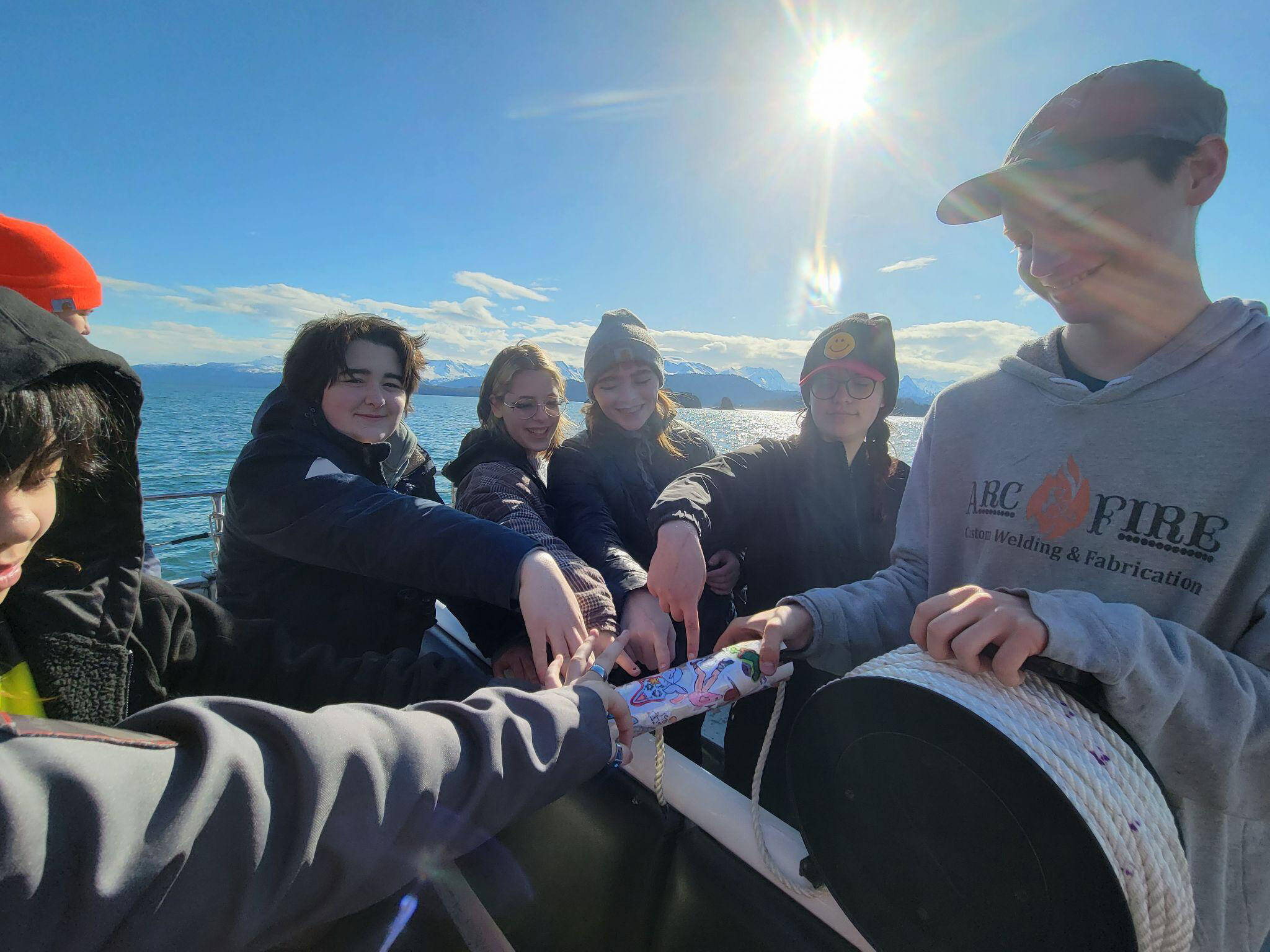In April, Homer Flex High School’s Marine Biology class was given the exciting opportunity to partner with the Center for Alaskan Coastal Studies to build and launch our own CTD device in Kachemak Bay.
CTD stands for “conductivity, temperature, and depth,” and is a vital device for oceanography. Normally these devices would cost thousands of dollars, but thanks to Andrew Thaler and the Oceanography for Everyone project and their efforts to produce open source underwater technologies, it’s possible to build them on your own for a fraction of the cost. With funding from BOEM (Bureau of Ocean Energy Management) and with Andrew walking us through the process, our class built our own CTD, learning to wire, solder and put it together ourselves. The collaboration with Coastal Studies also allowed students to study plankton, learn how to use different scientific instruments, examine CTD data, and take initiative with trip planning.
This project culminated with a class day trip out on the bay to drop our CTD, stopping at Gull Island and Kasitsna Bay to gather data. We were also able to do some tide pooling, nature journaling, a plankton tow, water quality samples, and other data collection, making it a very fun and productive trip.
We’d like to thank the Center for Alaskan Coastal Studies, specifically Katie Gavenus, and Henry Reiske, as well as Jim Schloemer and Ingrid Harrald of the Kachemak Bay National Estuarine Research Reserve; we would also like to thank the Rainbow Connection for getting us across the bay and the NOAA/UAF Kasitsna Bay Lab for hosting us there. People and organizations like these are vital parts of Flex’s ability to provide our students with quality hands-on education and unique experiences.
Beatrix Strobel was a Homer Flex junior for the 2021-22 school year.


